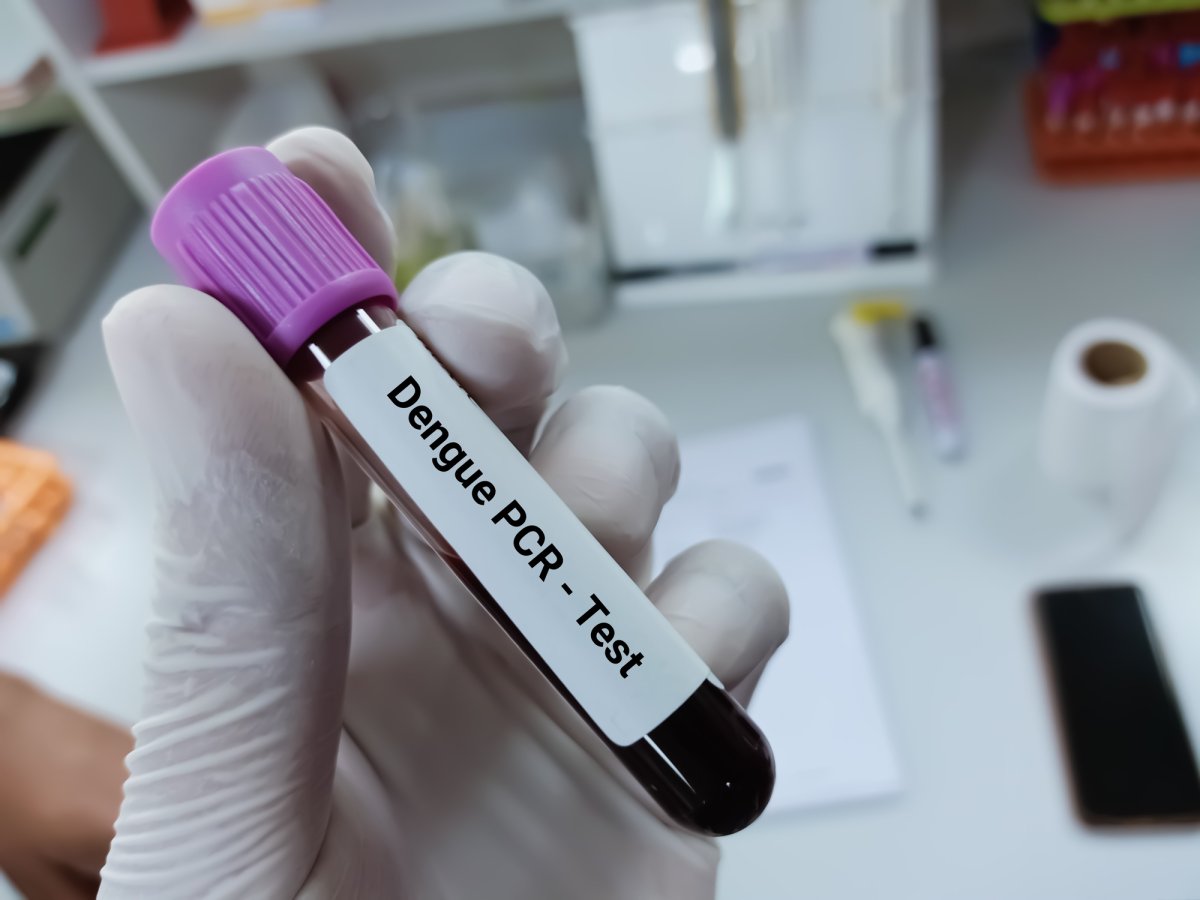The Centers for Disease Control and Prevention (CDC) has issued a health alert in the U.S. after five locally acquired cases of malaria were reported in Texas and Florida in the past two months. But experts say that malaria is not the only mosquito-borne disease we should be wary of.
Many people have been quick to link the recent malaria cases to climate change, speculating that warming temperatures have allowed malarial mosquitoes to expand their range into the U.S. But malaria in the U.S. is not a new phenomenon. In fact, during the 19th century malaria was one of the country's leading causes of death, according to data from the U.S. Census Bureau.
"We never stopped having suitable conditions here. We just did really well in the U.S. with control and elimination," Sadie Ryan, an associate professor of medical geography at the University of Florida, told Newsweek.

Even in the past 10 years, around 2,000 malaria cases, on average, have been identified across the U.S. annually, usually from returning travelers. "Every now and then, these can lead to local mosquitoes picking it up and transmitting it to another person, resulting in local transmission," Ryan said.
However, climate change may still increase the disease burden of malaria and increase its spread to other parts of the U.S.
"Global climate change has caused a gradual shift in weather patterns, some of which can provide more suitable conditions for malaria's vector [the female Anopheles mosquito] and its parasite," Rajiv Chowdhury, chair and professor of global health at Florida International University, told Newsweek.
"For example, a higher average surface temperature could lead to higher mosquito migration and abundance in areas that were previously uninhabitable by Anopheles mosquitoes," he continued. "These higher temperate conditions could also increase the growth rate and transmissibility of the parasite variants responsible for malaria."
In addition, he said, climate change can lead to higher rainfall and sea level rises in many places, "both of which can result in more areas or open spaces with stagnant water that typically serve as effective breeding grounds for mosquitoes."
Furthermore, climate change may also facilitate the spread of other mosquito-borne diseases that we may be less well equipped to fight.
"Malaria-transmitting mosquitoes have been in the United States for hundreds of years, so they are not necessarily moving into more temperate climates," Erin Mordecai, an associate professor of biology at Stanford who studies the ecology of infectious diseases, told Newsweek.
"On the other hand, new mosquitoes are expanding in the U.S. due to a combination of human mobility and warming climate—[specifically] Aedes aegypti and Aedes albopictus, which can transmit dengue, chikungunya and Zika," Mordecai said. "Every year we see a few locally acquired cases of dengue in the U.S. due to these mosquitoes, and the threat is expanding with climate change."
This is not happening only in the U.S., she said. "Peru is having its largest ever dengue outbreak right now, and that is likely driven by the warmer and wetter weather this year due to a mix of climate change and El Niño."

Ryan said that new species of malarial mosquitoes may find their way to the U.S., including species that are well adapted to exploiting built-up urban environments.
An Anopheles mosquito called Anopheles stephensi, originally a malaria transmitter in the Indian subcontinent and parts of the Middle East, she said, has "spread out from its native range and does very well breeding and living around people in urbanized environments."
It is difficult to predict the exact movements and transmission patterns of these diseases, but modeling has shown that as temperatures go up, the area of suitable climates for tropical disease–spreading mosquitoes will increase.
"More research in the continental U.S. is needed to build local transmission models that could accurately predict the spread of malaria [and other diseases]," Ryan said.
"Nonetheless, there is plenty of data available on how climate change impacts the malaria vector [female Anopheles mosquitoes] migration and abundance."
Protecting Against Mosquito-Borne Diseases
The best way to protect ourselves from malaria and other mosquito-borne diseases is to eliminate the source.
"Information regarding the effectiveness and timing of prevention interventions [is] often missing," Chowdhury said.
However, modeling studies show that killing adult female mosquitoes has a "much stronger transmission effect compared to interventions on any stages of the parasite life cycle," he continued. "Therefore, measures that would target vector control and prevention, like insecticide sprays or bed nets, are extremely important.
The CDC has recommended that people protect themselves by using bug spray, avoiding areas where mosquitoes congregate and covering exposed skin, according to Chowdhury. Precautions also include "drain and cover"—draining standing water to prevent mosquitoes from multiplying and using screens to prevent them from entering through doors and windows.

Disease surveillance is also essential, as well as disease preparedness.
"We have the tools ready for this," Ryan said. "We know how to control urban mosquitoes like Aedes aegypti. We have projections of where it could establish, so we can plan ahead. We can do mosquito surveillance and start training to recognize it in mosquito traps. We are so lucky to live in a country where we can muster the resources to do this."
But not all countries and communities have these resources. "It is the places in the world with lower capacity to anticipate and respond, or who are not expecting climate to shift the risk of suitability to them, who I worry about," Ryan said.
Mordecai also raised concerns about the inequality posed by these diseases. "We could see sporadic local transmission in places where there is high housing inequality, low access to vector control and workplace exposure to mosquitoes," she said.
Ultimately, more resources are needed to protect our global population from these parasites. Chowdhury stresses the necessity of prevention strategies, given the changes in climatic conditions and travel patterns in an increasingly interconnected world and the risks posed by emerging and reemerging infectious diseases, such as malaria, in the U.S.
Update 07/12/2023, 8:05 a.m. ET: This article was updated to clarify comments upon Sadie Ryan's request.
Uncommon Knowledge
Newsweek is committed to challenging conventional wisdom and finding connections in the search for common ground.
Newsweek is committed to challenging conventional wisdom and finding connections in the search for common ground.
About the writer
Pandora Dewan is a Senior Science Reporter at Newsweek based in London, UK. Her focus is reporting on science, health ... Read more
To read how Newsweek uses AI as a newsroom tool, Click here.






 Subscriber content
Subscriber content